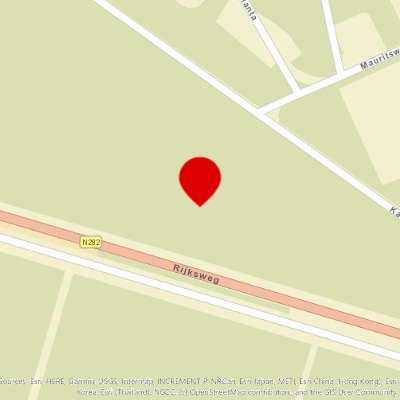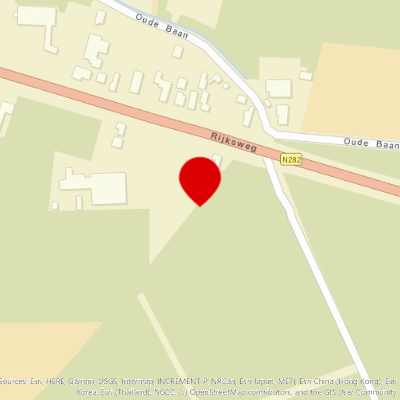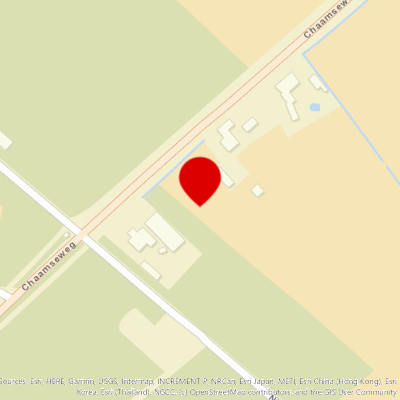Liberation route Gilze Rijen
Even today, Gilze-Rijen is dominated by flying and by planes. Immediately after the occupation, in May 1940, the Germans expanded the existing airport and renamed it Fliegerhorst Gilze-Rijen, one of the largest airports in Europe.
Starting point: from your location
Show all 5 photos
Even today, Gilze-Rijen is dominated by flying and by planes. Immediately after the occupation, in May 1940, the Germans expanded the existing airport and renamed it Fliegerhorst Gilze-Rijen, one of the largest airports in Europe. This military installation had a huge impact on local residents. Bombing of allies, employment of local residents to conduct repairs - and on this route, you'll read and hear all about it. Prepare yourself to hear some interesting stories: from the lucky resistance fighter, to the story of the Good German.
The Liberation Route Brabant tells the story of the liberation, but also shows what the Second World War was like for ordinary people who lived in Brabant at the time. Eight cycling routes, spread across North Brabant, lead you past the Brabant Remembers stories, the Liberation Route Europe audio columns, monuments and museums. Together they make the impact of the war on North Brabant clear, even all these years later.
-
Hotline routes
Hotline routesIf there is something wrong on the route, report it here.
Sights on this route
De Huyskamer Gilze

In 2022, Misset Horeca declared De Huyskamer Gilze to have the best patio of North Brabant. It is an award that the restaurant and bicycle café is rightfully proud of.
Starting point:
Bisschop de Vetplein 95126 CA Gilze
Navigate to starting point

Starting point:
rijen
Starting point:
rijen
Gilze-Rijen Air Base Military Collection
The military collection at Gilze-Rijen Air Base collects, manages and displays historical air force memorabilia from around the region. In addition, this exhibition gives an insight into the exceptional role of this air base in the region. Distinguished b
Starting point:
Rijksweg 1215121 RD Rijen

Gilze-Rijen Air Base Military Collection
Gilze-Rijen Air Base Military Collection
Rijksweg 121
5121 RD Rijen
Remains of the bunkers in Hulten
During the Second World War the Gilze-Rijen Air Base extended as far as here. There are the remains of a number of bunkers on the edge of the wood, with the bullet holes still clearly visible. Fourteen small, concrete ammunition bunkers once stood here: s
Starting point:
Rijksweg5125 NG Hulten

Starting point:
Dorpstraat 34Riel

De Kiek decoy airfield
Gilze-Rijen air base was frequently bombed by the Allies. To prevent the airfield from being destroyed, a decoy airfield, De Kiek, was constructed between Alphen and Riel. From the air it looked identical to Gilze-Rijen, and just like Gilze-Rijen it was b
Starting point:
Schijnvliegveld de KiekOude Tilburgsebaan
5131 RJ Riel

De Kiek decoy airfield
De Kiek decoy airfield
Schijnvliegveld de Kiek
Oude Tilburgsebaan
5131 RJ Riel
Starting point:
riel
Former German Military Camp Prinsenbosch
At the end of 1940, the Luftwaffe confiscated about thirty hectares of woodland between Gilze and Chaam, with the intention of constructing a large, luxurious army camp. The entire complex was completed by the end of 1941. The camp consisted of about fift
Starting point:
Prinsenbosch5126 ND Gilze

Former German Military Camp Prinsenbosch
Former German Military Camp Prinsenbosch
Prinsenbosch
5126 ND Gilze
De Huyskamer Gilze

In 2022, Misset Horeca declared De Huyskamer Gilze to have the best patio of North Brabant. It is an award that the restaurant and bicycle café is rightfully proud of.
Starting point:
Bisschop de Vetplein 95126 CA Gilze
Navigate to endpoint

Story of the route
De Huyskamer Gilze

In 2022, Misset Horeca declared De Huyskamer Gilze to have the best patio of North Brabant. It is an award that the restaurant and bicycle café is rightfully proud of.
Starting point:
Bisschop de Vetplein 95126 CA Gilze
Navigate to starting point

-
Gilze-Rijen Air Base Military Collection
The military collection at Gilze-Rijen Air Base collects, manages and displays historical air force memorabilia from around the region. In addition, this exhibition gives an insight into the exceptional role of this air base in the region. Distinguished by its size and diversity, the exhibition has a number of themed collections which are divided into the periods 1909-1940, 1940-1945, and the period after 1945 -
Remains of the bunkers in Hulten
During the Second World War the Gilze-Rijen Air Base extended as far as here. There are the remains of a number of bunkers on the edge of the wood, with the bullet holes still clearly visible. Fourteen small, concrete ammunition bunkers once stood here: storage places with space at the front suitable for providing cover or for shooting. The bunkers formed part of a complete defence system of military surveillance and defence objects. -
De Kiek decoy airfield
Gilze-Rijen air base was frequently bombed by the Allies. To prevent the airfield from being destroyed, a decoy airfield, De Kiek, was constructed between Alphen and Riel. From the air it looked identical to Gilze-Rijen, and just like Gilze-Rijen it was built next to a railway line, the Bels Line. It was a good attempt to mislead the frequently tired and disoriented Allied pilots. De Kiek was therefore bombed several times.
Whereas many of these fake airfields have since disappeared, a large part of De Kiek was fenced off after the war. It was used during the Cold War as a military surveillance base. Nowadays the area is used to render unexploded ordinance safe, and military exercises are still held here. Unusually, there is still a bunker on the site. There are also photos from the beginning of the war which show how the locals and the soldiers ‘got on well’ with each other, even though that was forbidden at the time.
De Huyskamer Gilze

In 2022, Misset Horeca declared De Huyskamer Gilze to have the best patio of North Brabant. It is an award that the restaurant and bicycle café is rightfully proud of.
Starting point:
Bisschop de Vetplein 95126 CA Gilze
Navigate to endpoint

- 15
- 13
- 16
- 11
- 32
- 42
- 19
- 71
- 01
- 43
- 54
- 55
- 08
- 09
- 34
- 47
- 74
- 70
- 72
- 67
- 68
- 69
- 15









